SVGDeal – When it comes to crafting a winning resume, every detail counts. From the layout to the wording, each element plays a role in helping you stand out from the competition. One often-overlooked aspect of resume design is the font choice. But did you know that the font you use can have a significant impact on how your resume is perceived by potential employers?
Choosing the right font for your resume can be a daunting task. With so many options to choose from, it can be challenging to know where to start. The good news is that there are a few fonts that are widely considered to be the best for resumes. By using one of these fonts, you can ensure that your resume looks professional, polished, and easy to read. So, which fonts should you consider using for your resume?
Why Font Choice Matters for Your Resume
Your resume is often the first impression you make on a potential employer. It’s important to make sure it looks professional and well-designed. One aspect of your resume’s design that you may not have considered is the font you use.
Choosing the right font for your resume can make a big difference in how it’s perceived by hiring managers. Here are a few reasons why font choice matters for your resume:
- Professionalism: Using a professional-looking font can help convey that you take your job search seriously and are committed to presenting yourself in the best possible light. A font like Times New Roman or Arial is a safe choice for most industries.
- Readability: Hiring managers often have to read through dozens or even hundreds of resumes. Using a font that’s easy to read can make it more likely that they’ll spend time actually reading your resume instead of just skimming it. Avoid using fonts that are too small or too fancy.
- Consistency: Using the same font throughout your resume can help create a sense of cohesion and make it easier to read. If you use multiple fonts, it can be distracting and make your resume look unprofessional.
- Design: Your font choice is just one element of your resume’s overall design. Choosing a font that complements the rest of your design can help create a cohesive and visually appealing document that stands out from the crowd.
Overall, choosing the right font for your resume is an important part of presenting yourself in the best possible light to potential employers. By prioritizing professionalism, readability, consistency, and design, you can create a resume that’s both visually appealing and effective at showcasing your skills and experience.
Serif vs. Sans-Serif Fonts
When it comes to choosing the best font for your resume, one of the most important decisions you’ll make is whether to use a serif or sans-serif font. Both types of fonts have their own unique characteristics, and choosing the right one can make a big difference in how your resume is perceived by potential employers.
Serif Fonts
Serif fonts are characterized by small lines or flourishes at the ends of the strokes that make up each letter. Examples of popular serif fonts include Times New Roman, Cambria, and Garamond. Serif fonts are often considered more traditional and formal, and are a good choice for resumes in industries such as law, finance, or academia.
Using a serif font can help your resume look more professional and polished. However, it’s important to choose a serif font that is easy to read and doesn’t look too old-fashioned. Times New Roman, for example, is a classic serif font, but it can also look outdated if it’s overused.
Sans-Serif Fonts
Sans-serif fonts, on the other hand, don’t have the small lines or flourishes at the ends of the strokes. Examples of popular sans-serif fonts include Arial, Helvetica, and Calibri. Sans-serif fonts are often considered more modern and informal, and are a good choice for resumes in industries such as marketing, design, or tech.
Using a sans-serif font can help your resume look more contemporary and eye-catching. However, it’s important to choose a sans-serif font that is still easy to read and doesn’t look too casual. Comic Sans, for example, is a well-known sans-serif font, but it’s not a good choice for a professional resume.
Conclusion
When it comes to choosing between serif and sans-serif fonts for your resume, there’s no one-size-fits-all answer. It’s important to consider your industry, your personal style, and the specific font you’re using. Ultimately, the best font for your resume is one that is easy to read, professional-looking, and reflects your unique personality and skills.
Font Size and Formatting
Font Size
When it comes to font size, it’s important to strike a balance between readability and space efficiency. A font size between 10 and 12 points is generally considered optimal for resumes. Anything smaller than 10 points can be difficult to read, while anything larger than 12 points can make your resume look cluttered.
It’s also important to consider the size of the screen on which your resume will be viewed. If your resume is likely to be viewed on a mobile device, a slightly larger font size may be necessary to ensure readability.
Formatting
When it comes to formatting your resume, simplicity is key. Stick to a single font and avoid using too many formatting options such as italics, bold, or underlining. Using too many formatting options can make your resume look cluttered and difficult to read.
If you do choose to use formatting options, use them sparingly and consistently. For example, you might choose to bold your job titles and use italics for company names. This can help make your resume easier to scan and can draw attention to important information.
When choosing a font for your resume, it’s generally best to stick to a sans-serif font such as Arial or Helvetica. These fonts are easy to read and are less likely to cause eye strain than fonts with serifs. Additionally, many Applicant Tracking Systems (ATS) are designed to read sans-serif fonts, so using one can help ensure that your resume is easily parsed by these systems.
Best Fonts for Resumes
When it comes to writing a professional resume, choosing the right font is crucial. The font you use can make or break your chances of landing an interview. In this section, we will discuss the best fonts for resumes.
Classic Fonts
Classic fonts are timeless and polished. They are easy to read and are perfect for resumes. Here are some of the best classic fonts to use for your resume:
- Book Antiqua: This font is a classic serif font that is easy to read and looks professional. It is a great choice for resumes.
- Tahoma: Tahoma is a sans-serif font that is easy to read and looks professional. It is a great choice for resumes.
Modern Fonts
Modern fonts are sleek and professional. They are a great choice for resumes if you want to stand out. Here are some of the best modern fonts to use for your resume:
- Avenir: Avenir is a modern sans-serif font that is easy to read and looks professional. It is a great choice for resumes.
- Avenir Next: Avenir Next is a modern sans-serif font that is easy to read and looks professional. It is a great choice for resumes.
Worst Resume Fonts
While there are many great fonts to use for your resume, there are also some fonts that you should avoid. Here are some of the worst resume fonts:
- Cursive Fonts: Cursive fonts are hard to read and look unprofessional. Avoid using them for your resume.
- Narrow Fonts: Narrow fonts are hard to read and can make your resume look cramped. Avoid using them for your resume.
- Papyrus: Papyrus is an overused font that looks unprofessional. Avoid using it for your resume.
In conclusion, choosing the right font for your resume is important. Stick to classic and modern fonts that are easy to read and look professional. Avoid using cursive fonts, narrow fonts, and overused fonts like Papyrus. By following these tips, you can create a polished and professional resume that will catch the eye of recruiters.
Resume Design and Layout
When it comes to creating a resume, the design and layout of your document can be just as important as the content you include. A well-designed resume can help you stand out from the crowd and make a positive first impression on potential employers.
Resume Template
One of the easiest ways to create a professional-looking resume is to use a pre-designed template. Many word processing programs, such as Microsoft Word, offer a variety of templates that you can customize to fit your needs. When choosing a template, look for one that is clean and simple, with plenty of white space and easy-to-read fonts.
One-Page vs. Two-Page Resumes
Traditionally, resumes were expected to be one page in length. However, in some industries, such as academia or research, a two-page resume may be more appropriate. When deciding whether to create a one-page or two-page resume, consider your level of experience and the amount of relevant information you have to include. If you have a lot of experience or relevant skills, a two-page resume may be necessary to showcase all of your qualifications.
Margins
Margins are an important aspect of resume design, as they can affect the overall look and feel of your document. When setting your margins, aim for a minimum of 0.5 inches on all sides. This will help ensure that your resume looks neat and professional, and that all of your information fits on the page.
In conclusion, the design and layout of your resume can have a significant impact on your job search. By choosing a clean and simple template, deciding on the appropriate length, and setting your margins correctly, you can create a professional-looking document that will help you stand out from the crowd.
Conclusion
In conclusion, the font you choose for your resume can have a significant impact on how it is perceived by hiring managers and employers. A well-organized and legible resume is essential to catch the attention of potential employers, and it all starts with the font you choose.
When applying for a formal or organized role, it is best to stick with classic fonts such as Times New Roman, Arial, or Calibri. These fonts are easy to read and are widely accepted in Microsoft Office and applicant tracking systems.
On the other hand, if you’re applying for a creative role, you may want to consider using a more unique font to showcase your personality. However, be careful not to go overboard and choose a font that is difficult to read or too distracting.
Regardless of the role you’re applying for, it’s important to ensure that your font size is between 10 and 12 points to maintain legibility. Additionally, make sure to use bold text and bullet points to highlight important information and make your resume more visually appealing.
In summary, choosing the right font for your resume is crucial to make a good impression on potential employers. By keeping it simple, legible, and well-organized, you can increase your chances of landing a job interview and ultimately, securing your dream job.

Nick is a Blogger and graphic designer with over 10 years of experience. Managed multiple Woocommerce sites, Etsy and contributors to Microstock sites (Shutterstock, Adobe Stock, etc).

